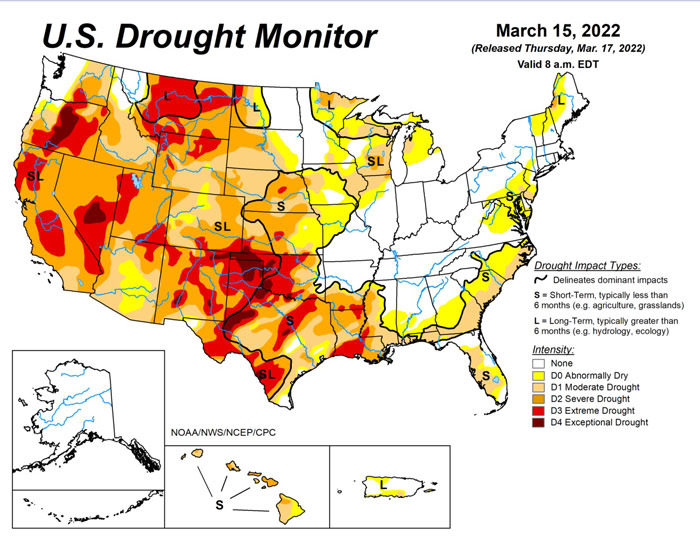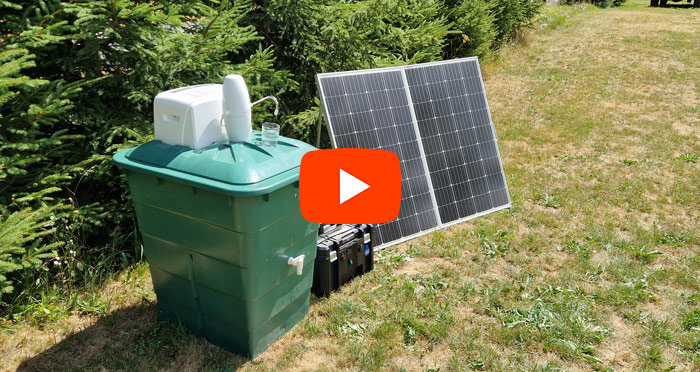Click Here To Join Our Telegram Channel for FREE daily tutorials!
In a survival situation, you’ll have to feed yourself and you might not have the luxury of being able to be picky. Unless you’re a skilled hunter, with limitless supplies of ammo, you’ll have to change your options a bit, from delicacies to pretty much what’s left that is edible.
The truth of the matter is: if it’s meat, you can eat it for sustenance. Almost all animals are fit for consumption, with the exceptions of course of those who are poisonous or detrimental in other ways to human health. But the list is not that long, and if you are trained a bit recognizing the poisonous species from the safe ones, you will not go hungry or jeopardize your health. Just prepare yourself mentally and accept the fact that you might find yourself animals to catch and eat; animals that not only walk or fly, but also crawl, swim, or buzz. If you are strong enough to overcome this mental barrier, you’ll find that meat is meat, no matter the shape or size it comes in.
In order to be as efficient as possible in gathering resources with the upmost of ease, you’ll need to read up a bit in the matter. Be aware of the animal life that’s native to your surroundings and know their lifestyle and patterns. So you’ll need to understand the behavior, food preferences, mating season and availability of a certain species. It’s important, as may prove very tricky to track down and hunt while others may be just sitting around for the taking.
Mammals
In principle, mammals are the best source of proteins available and to Americans is the food of choice. But hunting or procuring mammal meat has disadvantages also. Most of them won’t come without a fight and the amount of damage an animal can inflict is directly proportionate to its size. So if you’re planning on hunting large game, it’s advised you do so with professional hunting equipment. But it’s not always a matter of size, as even smaller mammals, like wild boars and even small rodents, can get very aggressive in order to protect their young. In a survival scenario, be very cautious as not to get bitten or scratched; an infected open wound is the last thing you need. Almost all mammals are edible without boundaries, with few exceptions: scavengers (most of them are carrying diseases), the platypus (it has poisonous glands), the polar bear (has dangerously high levels of vitamin A in the liver) and more.
Birds
All species of birds are edible without boundaries and the only variables consist in size and flavor. As most of them fly, it’s very important to know and understand a species habits in order to catch them easily. The best ones to catch are the ones that don’t put much of a fight. So during night time, pigeons can be easily picked up by hand out of their nests. And many other types of birds won’t tend to fly away when nesting, even if they sense the danger. So picking them up it’s just a mere formality. Most birds have a clear pattern, which is easily observable. If you study them carefully enough, you’ll know when and where they fly out from the nest area, in order to drink or procure food. If the nesting area is out of reach, the drinking or feeding spot could become a possible hunting ground. Catching them is easily done by setting traps and snares.

Nesting habits and patterns
Fish
Fish meat is extremely nutritious; not only is it an excellent source of protein, but also of beneficial fasts. They’re usually more abundant then mammals and most ways of procuring fish are way easier than hinting. Here too comes in play the knowledge of the patterns and behaviors of species. For instance, almost all species tend to feed abundantly before storms, because right after a storm the water tends to get muddy and impure.
So the best time for fishing is right before bad weather. If the water currents tend to get stronger than usual, fish tend to rest in “sanctuaries” where the water is calmer, like near rocks or other sturdy spots like logs, submerged foliage etc. They also have a tendency towards light during night time.
Salt-water fish can be poisonous, so you have to be aware of what you’re about to eat. Best stay away from species like red snapper, thorn fish, cowfish, puffer fish, porcupine fish etc. But the ones that are safe to eat, if you catch them further away from the shore, you can even eat raw. This is possible due to the high levels of salinity in deep waters, which prevents parasitic infestation.
It’s a whole different story when it comes to fresh-water fish. All of them must be thoroughly cooked before eating, in order to kill off all the parasites. As an up-side, freshwater fish are never poisonous. But this doesn’t mean you don’t have to be cautious when it comes to wandering into fresh-water. The catfish, for example, has very sharp needles in on its dorsal fin and barbels, which can deeply pierce into human flesh. So tread carefully and avoid painful wounds and infections.

The spikes in the dorsal fin and barbles (the Catfish)
Crustaceans
Most crustaceans are easy to spot and catch. The fresh-water shrimp can measure 0.25cm – 1 inch and can form large colonies or simply swim around vegetation. They can also be found in the mud vegetation of lakes. The larger crustaceans, like lobsters, crabs and shrimps are usually found where the water reaches about 30 feet deep. Lobsters and crabs are best caught during night time, with either a baited hook or a baited trap. Shrimp often comes at the surface of the water during night-time, attracted by light, making it easy for you to just scoop them up. Crayfish is also a great crustacean to have for breakfast, lunch or dinner. They’re akin to lobsters and crabs and can be found in the soft mud near the breathing holes of their nests or by round rocks in streams (but only during the daytime, since they’re active at night). They have a hard shell (exoskeleton), 10 legs and large pincers.

Crayfish
Insects
They’re the most spread life form on Earth, and unlike beef which consists in about 20% protein, insects can pack up to 65% – 80% pure protein. And the best part is that they’re everywhere and very easy to catch. Grassy spots are usually a great place to pick up all sorts of insects and it makes it very easy to spot them. A rotting piece of wood, for example, may also be a great source for a large variety of insects such as ants, beetles, termites, grubs etc. You can also scout many other places that could naturally provide shelter or nesting places for the tiny critters.
But many bugs do not come bug-free, as some of them (especially those with hard shells) will host a vast number of parasites. So if you plan on having beetles, grasshoppers or cicadas, don’t do so before cooking them. As much as they vary in shape as sizes, so do they in taste and texture. Eating them raw or cooked is one way to go, but another valid option is grinding them into a nutritious paste which you can mix with various herbs and spices, to add flavor.
The ones that you have to avoid eating are the ones that usually sting or bite. The larvae are safe to eat though, as they haven’t developed the stingers or poison glands yet. Also, if they’re hairy or brightly colored, keep away, not only by eating them but also from touching or interacting with them. Also, spiders should be off-limits and all of the insects that are carriers of diseases like flies, mosquitoes, caterpillars etc.
If you ever happen to find yourself in the situation of having to survive strictly on what Mother Nature provides, you’ll be just fine as you respect the basic set of written and unwritten natural rules. Just educate yourself on the matter, read up on specialized journals and articles in what’s safe to eat and what’s not and never take unnecessary risks. A wrong move might cost you your life.
This Crazy Off Grid Device Literally Makes Drinkable Water From Fresh Air:
According to NASA, the U.S. is expecting a 100-YEAR LONG MEGADROUGHT.
It's already begun. Ask the farmers in California. They know.
Every survivalist knows that water is of critical importance. You NEED an independent water source that you can count on!
As an interesting "survival rehearsal" - imagine that you turned the tap on right now and nothing came out. How long would you last?
But what if there was another water source literally hidden in plain sight. That's right, I'm talking about the atmosphere!
The amazing thing about getting water from the natural moisture in the air... is that it is ALWAYS available.
This gives you real water security!
Learn more about how to tap into "Nature's secret water reservoir" and stay hydrated when TSHTF!
Watch the video:
😳 What Tinnitus Does To Your Brain Cells (And How To Stop It)
After 47 years of studies and countless brain scans done on more than 2,400 tinnitus patients, scientists at the MIT Institute found that in a shocking 96% of cases, tinnitus was actually shrinking their brain cells.
As it turns out, tinnitus and brain health are strongly linked.
Even more interesting: The reason why top army officials are not deaf after decades of hearing machine guns, bombs going off and helicopter noises…
Is because they are using something called "the wire method", a simple protocol inspired by a classified surgery on deaf people from the 1950s...

I Can't Help Showing This Off:
If you haven't heard of Claude Davis yet do yourself a huge favor and watch this video.
One of the smartest guys I ever had the pleasure of meeting, Claude set-up a unique prepping system that changed his life forever.
I already tried it myself and let me tell... you I was completely blown away... His surprising tactics could make your life easier and give you the peace of mind you deserve.
Don't just take my word for it... watch his short video and decide for yourself.

Most People Don't Have The Guts To Try This:
An amazing discovery in an abandoned house in Austin, Texas: A lost book of amazing survival knowledge, believed to have been long vanished to history, has been found in a dusty drawer in the house which belonged to a guy named Claude Davis.
Remember... back in those days, there was no electricity... no refrigerators... no law enforcement... and certainly no grocery store or supermarkets... Some of these exceptional skills are hundreds of years of old and they were learned the hard way by the early pioneers.
>> Click here to find out about them now
We've lost to history so much survival knowledge that we've become clueless compared to what our great grandfathers did or built on a daily basis to sustain their families.
Neighbors said that for the last couple of years Claude has tried to unearth and learn the forgotten ways of our great-grandparents and claimed to have found a secret of gargantuan proportions. A secret that he is about to reveal together with 3 old teachings that will change everything you think you know about preparedness:
>>> Click Here To Watch His Short Video <<<

More Off-Grid And Survival Resources:

What REALLY Happens When You Bury a Shipping Container? (Hint: It's A Bit Crazy...)
Shipping containers are all the rage - but if you are thinking about buying one, you MUST watch this video first:
There's a general belief that if you bury a shipping container you can create an awesome root cellar / storm shelter / survival bunker.
But is a shipping container strong enough to handle the pressure?
Watch the video to see what happens:
What Really Happens When You Bury a Shipping Container? (Click To Watch Video)













